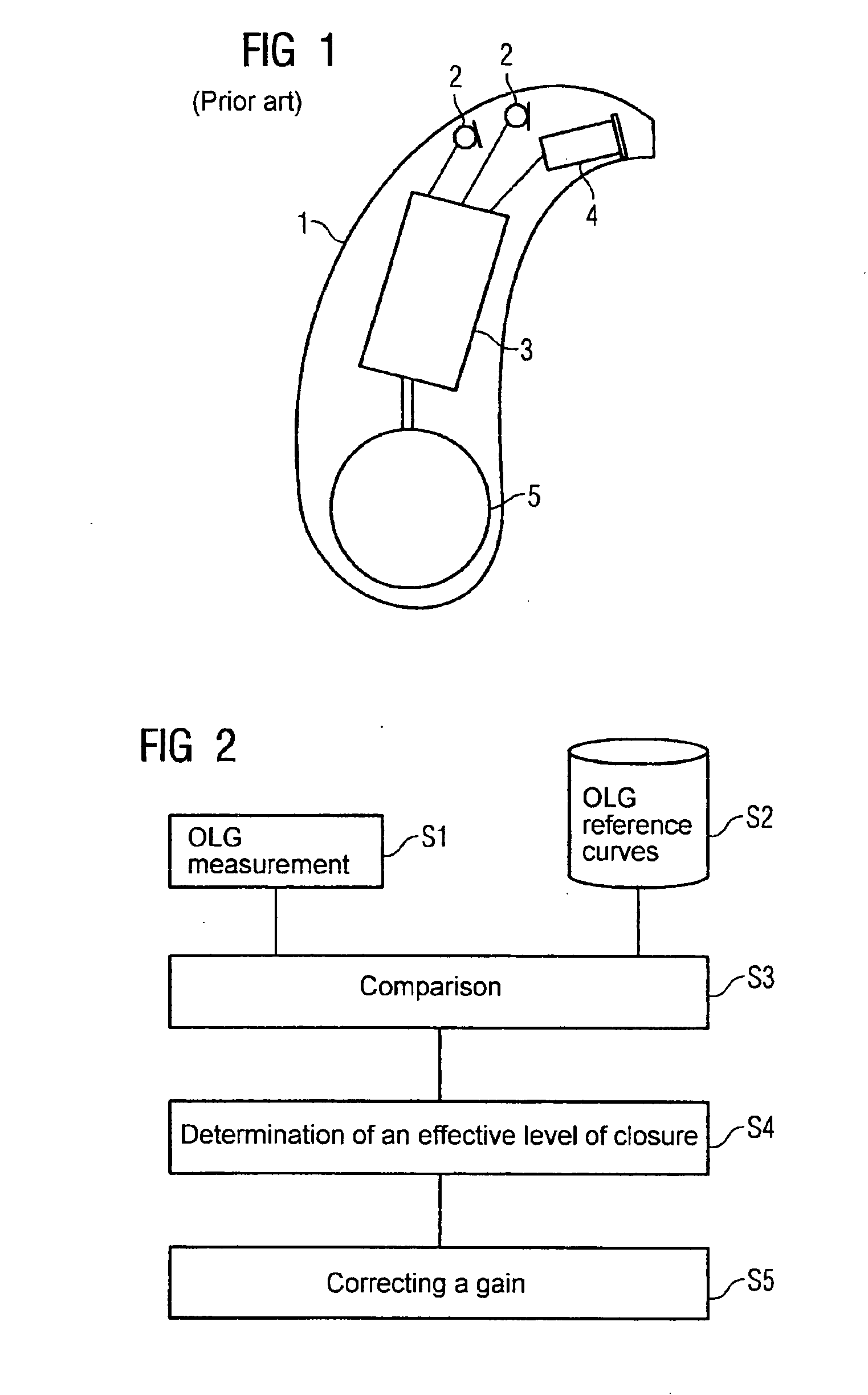Method and device for determining an effective vent
a technology of effective vents and vents, applied in the direction of hearing aid vents, hearing aid sets, electrical equipment, etc., can solve the problems of only being incompletely resolved, significant leakage effects, and limited gain
- Summary
- Abstract
- Description
- Claims
- Application Information
AI Technical Summary
Benefits of technology
Problems solved by technology
Method used
Image
Examples
Embodiment Construction
[0021]The embodiments described in detail in the following represent preferred embodiments of the present invention.
[0022]For adjustment purposes the hearing aid, which is illustrated symbolically in FIG. 1, is connected in wireless or wired fashion to an adjustment device. Furthermore, it is mounted in / on the ear of the hearing aid wearer in the intended manner.
[0023]The basic idea of the invention consists in the fact that the level of closure with which an ear tip closes the auditory canal can be concluded from an OLG measurement. With regard to an OLG measurement, the open loop gain is ascertained by way of the frequency. This means that the feedback is separated at the amplifier of the signal processing unit 3 of the hearing aid and the maximum gain is measured depending on the frequency at which there is not yet any feedback whistling or other feedback artifacts. According to step S1 in FIG. 2, an OLG measurement is thus performed on the hearing aid having an instant fit ear t...
PUM
 Login to View More
Login to View More Abstract
Description
Claims
Application Information
 Login to View More
Login to View More - R&D
- Intellectual Property
- Life Sciences
- Materials
- Tech Scout
- Unparalleled Data Quality
- Higher Quality Content
- 60% Fewer Hallucinations
Browse by: Latest US Patents, China's latest patents, Technical Efficacy Thesaurus, Application Domain, Technology Topic, Popular Technical Reports.
© 2025 PatSnap. All rights reserved.Legal|Privacy policy|Modern Slavery Act Transparency Statement|Sitemap|About US| Contact US: help@patsnap.com


